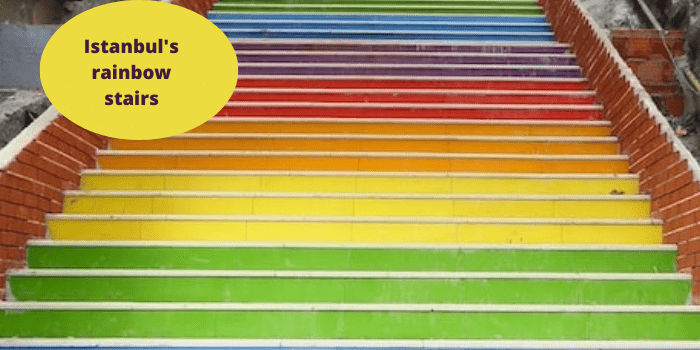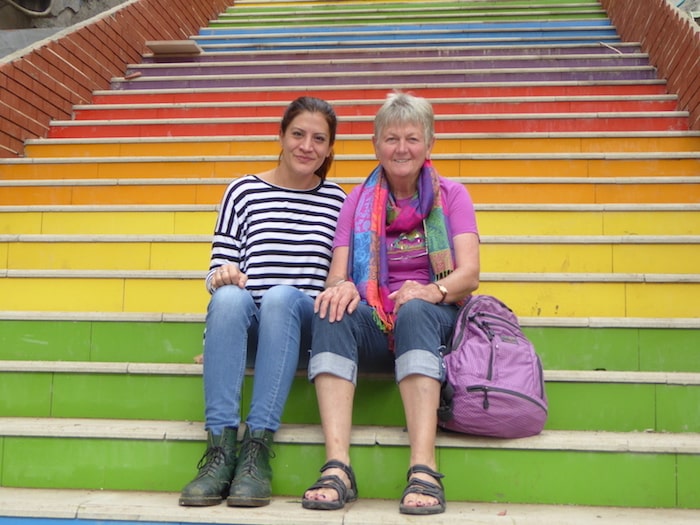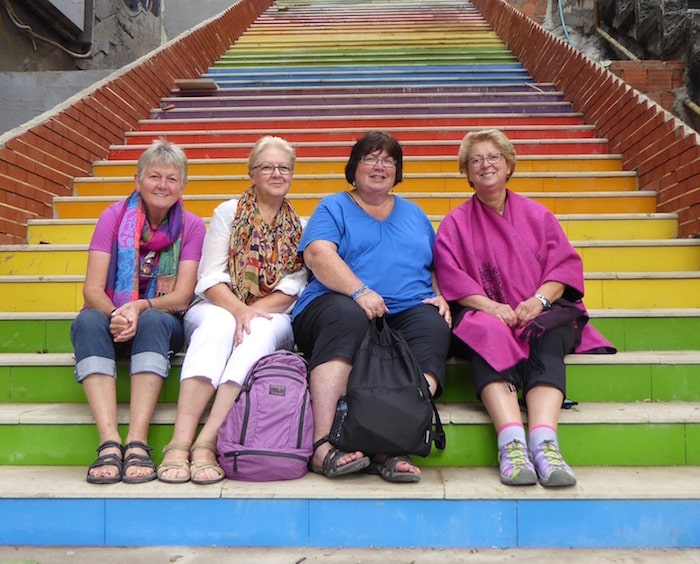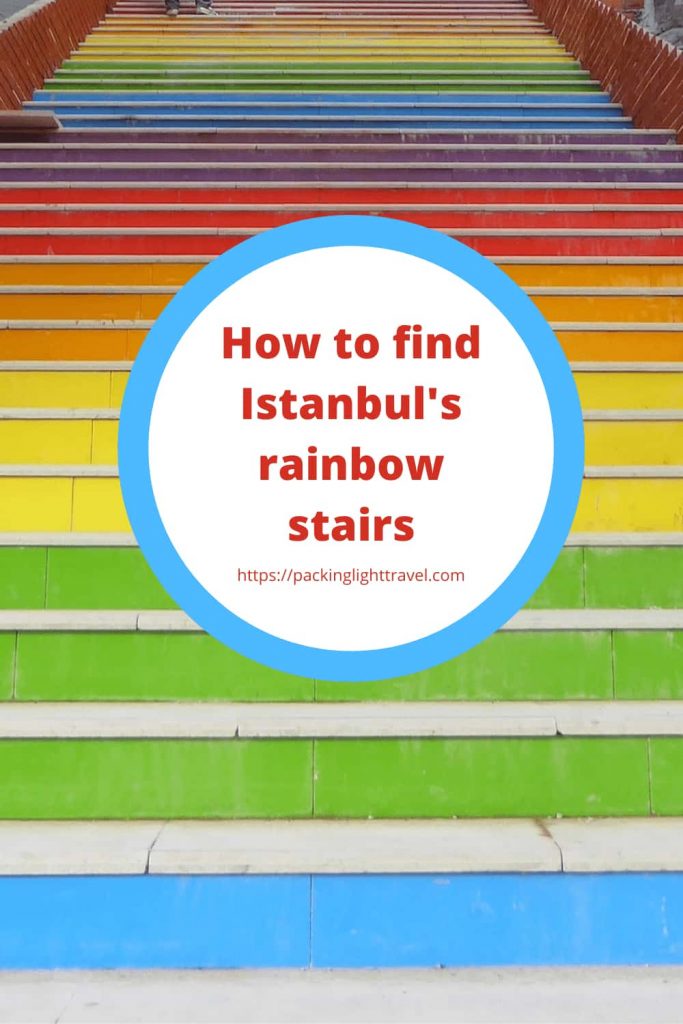In a centuries-old neighbourhood in the centre of Istanbul, retired forestry engineer Hüseyin Çetinel spent four days painting almost 200 steps of a public thoroughfare in a myriad of bright colours. Little did he realize that Istanbul’s rainbow stairs would be the centre of a country-wide controversy.
Istanbul’s rainbow stairs achieve notoriety
This was in August 2013. Hüseyin Çetinel became an overnight sensation. Not because he transformed a drab set of concrete steps linking the Findikli and Cihangir districts into a magnificent rainbow-coloured staircase, but because of the local government’s response. The municipality presumably saw it as a rebellious act driven by a social and political agenda, and returned the steps to their original grey colour.
Public reaction
Public outrage was swift and effective. In the wake of the Gezi Park protests, the covering of the rainbow colours was seen as yet another sign of intolerance and lack of respect for citizens’ right to claim public spaces. With the rallying cry of #DirenMerdiven (#ResistStairs), before-and-after pictures and calls to action went viral on social media.
After people across the country painted steps in rich rainbow colours, the municipality relented and returned the “rainbow stairs” to the resplendent colours of Hüseyin Çetinel’s vision.
Our visit to the rainbow stairs
In October 2015, we found the steps under reconstruction. The paint had been replaced with colourful tiles across the rise of each new step. An inquiry at Café Nove next door led to the discovery of Hüseyin Çetinel’s daughter Nazli who has operated the café with her husband for the previous eight years.
It turns out the steps were in serious need of repair. The Beyoğlu Municipality responded positively to requests from neighbourhood residents to demolish and rebuild the stairs after incorporating infrastructure improvements to electricity, natural gas, and sewage.
Nazli seemed sad to see her father’s vision transformed in this way, describing his original masterpiece as “perfect.” It had been a perfect gift from a father to a daughter who lives and works close to the stairs.
An unwitting hero
At the height of the controversy, Hüseyin Çetinel achieved the status of an unwitting hero of a social and political movement.
Requests for interviews prevailed.
“I didn’t do it for a group or as a form of activism. I did it to make people smile,” he told the Turkish media. As he laboured for four days spreading forty kilograms of paint on a crumbling concrete staircase, I can imagine one smile, in particular, he had in mind.
A lasting symbol
Istanbul’s rainbow stairs stand as a symbol of public protests during a turbulent period in Türkiye’s recent political history. The Gezi Park protests in the spring of 2013 were marked by excessive use of force by police and an overall absence of government dialogue with protesters. During the same period, the government opposed an extension of LGBT (lesbian, gay, bisexual, and transgender) rights in Türkiye. As a result, the Istanbul Pride parade at Taksim Square was the largest ever held in the country. In fact, it was the biggest ever seen in Eastern Europe.
The story of Hüseyin Çetinel’s generosity, and the quiet yet effective rainbow stairs protest was so compelling, it demanded our very own Turkish Pride picture.
How to find Istanbul’s rainbow stairs
Istanbul’s rainbow stairs are easy to find. They’re located on Salı Pazarı Yokuşu with Café Nove at one corner and T.C. Ziraat Bankası A.Ş. at the other.
Take the T1 Tramway in the direction of Kabataş on the European side of the Bosphorus. Or, walk the three kilometres or so from the Galata Bridge. The stairs are between the stops of Findikli and Tophane. In fact, between both stops are three sets of painted steps.
If you found this post helpful, please share it by selecting one or more social media buttons. Thank you.
If Turkey is part of your travel plans, you might be interested in:
- An amazing two-continent food tour in Istanbul: a review
- Connect with a rich history by visiting a caravanserai on the ancient Silk Road in Türkiye
- Explore Istanbul on a budget: get an Istanbulkart
- 35 Best things to do in Istanbul for a memorable visit
- What’s the best mosque to visit in Istanbul?
- Is ballooning in Cappadocia worth it?
- A relaxing blue cruise on a Turkish gulet: Seaborn Legend
- 7 Reasons to visit Derinkuyu underground city in Türkiye
Pin it for later?










Great post – thanks for linking through from my blog. It’s such an inspirational story!
Hi Anne,
Thanks for commenting on my blog to let me know a rainbow update. How sad to see these beautiful steps and what they represented destroyed! Despite the need for repair, I feel like the gov’t just wants to wipe out anything connected to the Gezi protest time. 🙁
We haven’t been back to Istanbul since March 2014 so we’re hoping to do a visit later this year if all goes well.
Joy @MyTravelingJoys recently posted…Christchurch: 5 Years After Deadly 2011 Earthquakes
So the steps are gone?
Reconstructed. The paint over crumbling concrete is gone, replaced with colourful tiles. From what I understood, the creator Hüseyin Çetinel was consulted during the transformation. Repairs were necessary, and Hüseyin’s vision was respected.
Anne Betts recently posted…Pack light and tight with packing organizers